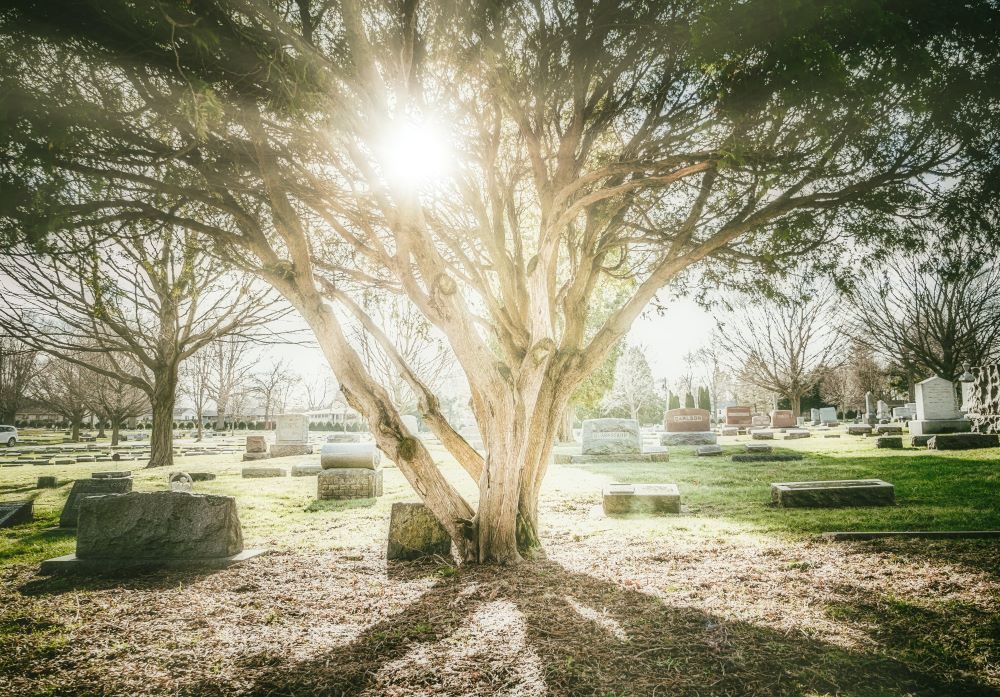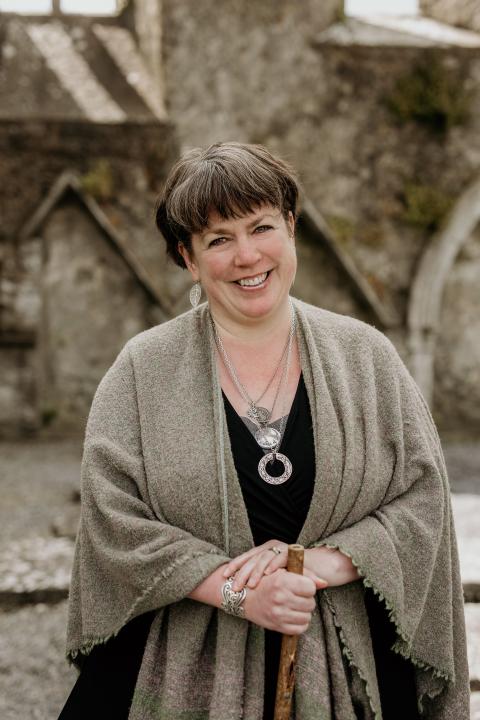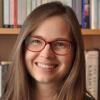
(Unsplash/Kevin Andre)
Christine Valters Paintner's newest book, The Love of Thousands: How Angels, Saints, and Ancestors Walk with Us toward Holiness, offers readers a road map for enriching their faith through engaging with those who came before us and those who dwell beyond us.
Paintner spoke with NCR about the process of writing the book, building bridges beyond the veil and practicing resurrection. The following conversation has been edited for length and clarity.

NCR: In your introduction you mention that this book began as an exploration of your relationship to your ancestors. How did that circle widen for you to include the angels and the saints?
Paintner: I've had a long devotion and relationship to various saints — Hildegard of Bingen being the prime one, and also Benedict because I'm a Benedictine oblate. But when I was working with the ancestors, I suddenly realized that some of them can be wounded, but many of them are what we would call wise and well. I realized that the only difference between the saints and the wise and well ancestors is a matter of church teaching, in terms of who is an official saint and who is not. It helps me to feel a connection to my spiritual ancestors.
When I was working with the ancestors and the saints and thinking about how we connect across the veil to these beings who only want to reach out to us in love, I realized I had to include the angels as well. There's a cemetery in Vienna where my father and my grandparents are buried, and I love to walk there. There are lots of big stone angels there that feel like they have the density to meet me in my struggles.

Christine Valters Paintner, author of The Love of Thousands: How Angels, Saints, and Ancestors Walk with Us toward Holiness (Courtesy of Christine Valters Paintner)
I love that you dedicate a chapter to wrestling with the angels and note that not all encounters with the world beyond us are necessarily peaceful. How have you been able to make space for grief and loss through the angels, saints and ancestors?
I love the story of Jacob wrestling the angel. The long night, the not knowing who he was wrestling with, the wounding, the dislocation of his hip, the blessing that he demands, the new name he gets.
There are so many aspects of that story that are powerful and archetypal. I think most of us as human beings have long nights when we feel like we're wrestling with some being greater than us, and we are wounded in that process of wrestling with life's challenges.
What I love is that there's the wounding, but there's also the blessing. And that new name calls to mind the image of Henri Nouwen's "wounded healer." Really, our gifts in life emerge from the places where we're willing to wrestle, where we're willing to face the struggles with an open heart and ask for the blessing, which will inevitably come as a gift to be brought back to others. The more that we're conscious of the suffering and the struggle, the more we can bring that gift of presence to others who are going through something similar.
You mention that your work through your ancestral line is informed by family systems therapy. I think so many of us have pain in our family line, and this is a beautiful way to work toward making peace with it. Could you tell us a bit more about that approach?
After my mother died, I was in tremendous grief. My father had died a few years earlier, and he and I had a very difficult relationship. When my mother died, I felt a lot of anger at how he had treated her and me. I went to see a Jungian analyst who was just a tremendous gift in my life and has been an ongoing spiritual director in the 15 years since I first met him. He introduced me to family systems theory, originally created by Murray Bowen.
There are several different principles involved, but one of them is called multigenerational transmission process, which means that we carry the wounds of our parents, the wounds of our grandparents, the wounds of our great-grandparents that have not been reconciled in previous generations. And this has come to be proven scientifically.
But the beauty is that we can do that work, and we can call on the ancestors to support us, and the angels and the saints. I've experienced it over and over again in my own life and work and with my father in particular, beautiful healing experiences. I think in Western culture, individualism is so woven into how we are in the world and what we assume about life. It's wonderful to realize that we don't have to do that healing work by ourselves, that it's actually a collective work.
Advertisement
So many of the suggestions for further exploration include writing — elegy, poetry, blessing. I know writing is a central practice for you, and it seems like it builds a bridge between worlds. Are there other bridges you recommend?
I recommend anything that helps us to cultivate our intuitive sense of knowing as opposed to the rational, linear, logical way of knowing because so much of this work happens outside of that parameter. For me, the expressive arts — movement or visual expression or writing or music — are gateways into a connection to that other world.
You describe honoring the saint and ancestors "not as a morbid act of revering death but a way of practicing resurrection." This life offers us a call, in your words, "to co-create a more beautiful world with God." Where have you found that resurrection and co-creation in your own life?
For me, practicing resurrection has a lot to do with embodiment because so many of the resurrection narratives are connected to the body.
As I've moved through this journey, there's been a lot of struggle in it. But it's all been in service of greater life, of greater joyfulness, of this sense that the wise and well ones wish nothing but blessing upon me, and they celebrate what I have the opportunity to do in the world.








